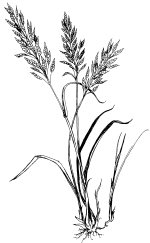
History of the Land
Today, native prairie is the most endangered habitat of North America. From the 1850s to the end of the twentieth century, economic and population pressures led to widespread cultivation and development of most of the native prairie in Rice County. But conservation efforts are beginning to create a new and more diverse landscape.
Before 1854: The Dakota used their land for hunting and small-scale agriculture. Theirs was a landscape shaped by grazing bison and frequent fires.
1854-1885: When the land was transferred to the United States government in the 1850s, new settlers brought with them European-style agriculture. Throughout most of Rice County, prairie gave way to the plow.
1885-1940: The villages of Dennison and Nerstrand emerged in the 1880s. Linked by the Chicago Railroad, these villages were surrounded by growing farms and dairy herds, serving national and eventually international markets.
1940-2008: Throughout the twentieth century, Rice County was farm country, dominated by increasingly industrialized agriculture.
Today: In 2008, Craig Koester began the process of putting the Koester Prairie site under conservation. The Nelson family soon followed suit with the Engeseth-Rinde site. With the help of the Trust for Public Land, the sites were transferred to state ownership and designated as a wildlife management area.
Explore the prairie history by navigating the different periods of the site using the table of contents below.
History of the Land
I Geological History
II Pre-1854: Hunting and small-scale agriculture
III 1854-1885: European-Style Agriculture
IV 1885-1940: Railroad and Markets
V 1940-2008: The Era of Industrial Agriculture
VI 2008-present: The Era of Conservation

The central valley of the prairie today.



